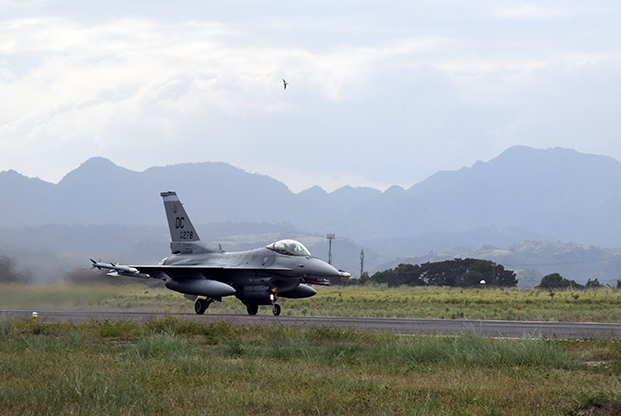
A USAF F-16 takes off during the Bilateral Air Contingent Exchange-Philippines at Cesar Basa AB, Philippines, on Jan. 22, 2019. Air Force photo by SSgt. Anthony Small.
Pacific Air Forces is “surveying” its capabilities and relationships with allies in the area, to better understand what airfields it has available to more quickly respond to peacetime and wartime needs.
PACAF boss Gen. Charles Q. Brown told Air Force Magazine last week he is assessing airfields and talking to leaders of countries in his area of responsibility to get a better understanding of “airflow capacity” around the region. For example, understanding that one small island nation may have an airstrip and fuel available for a humanitarian response mission.
“One of the key parts for us is our ability to move into locations and support in a crisis for humanitarian assistance and response,” Brown said. “The better we understand some of these airfields, and fuel capacities” the “faster” and “more responsive” the service can be.
Additionally, some countries welcome USAF assets in the event of a disaster response mission, but don’t want to host strike aircraft in the event of a conflict. Brown said it’s important to “understand where partners are and get a feel for where they stand.”
Additionally, PACAF is surveying to see what equipment is available at which airfield to help tailor how they respond. “Don’t bring a kitchen sink, if you can rent a kitchen sink at the location we’re going to,” he said. “What we’ll do is we’ll bring a bunch of stuff because we’re not sure. Well, if we have a better understanding of what’s there, then you can lighten your lift requirement.
“It’s really just getting smarter about the region. I want to have a bit more of a playbook of all the locations we go to.”
